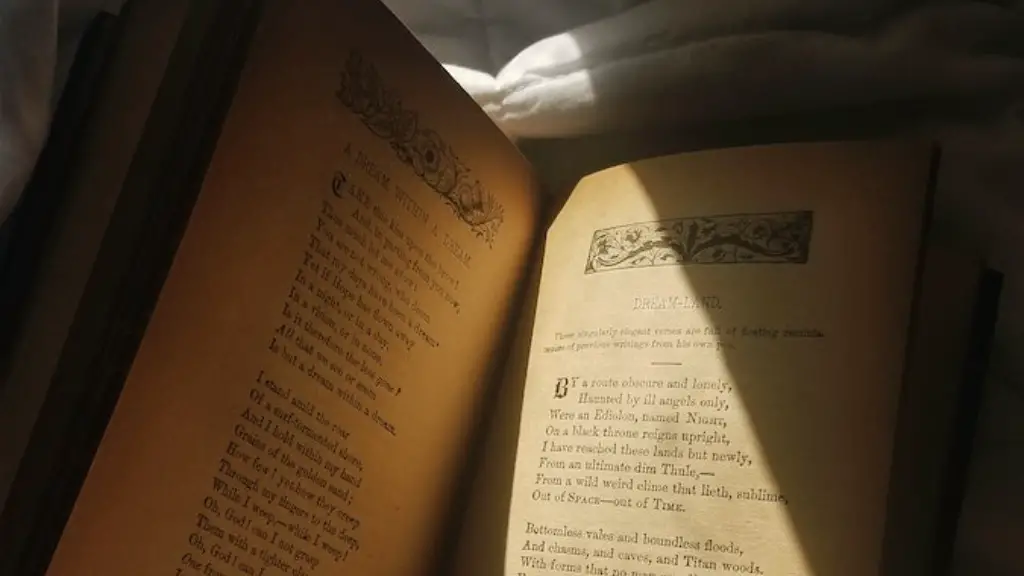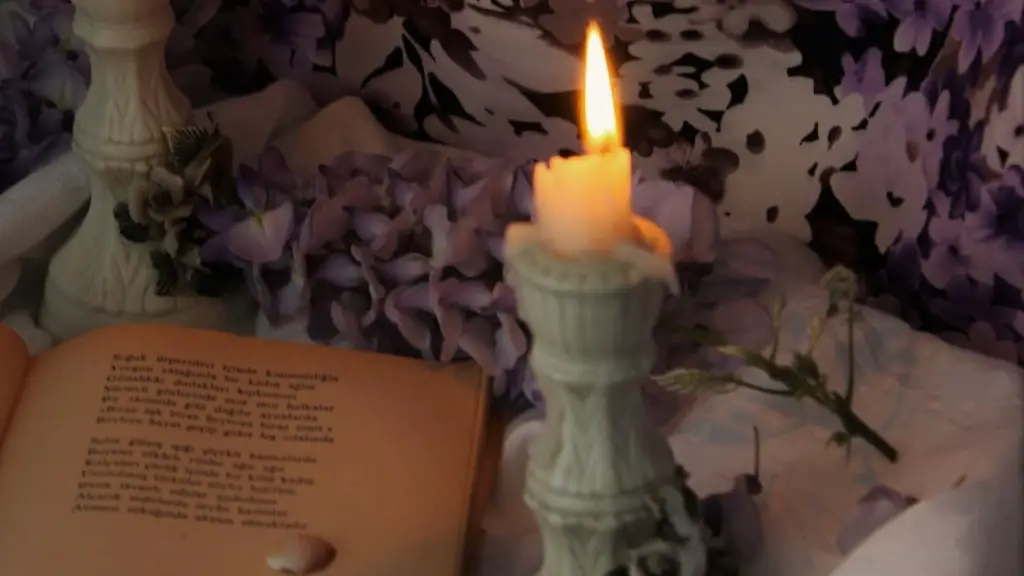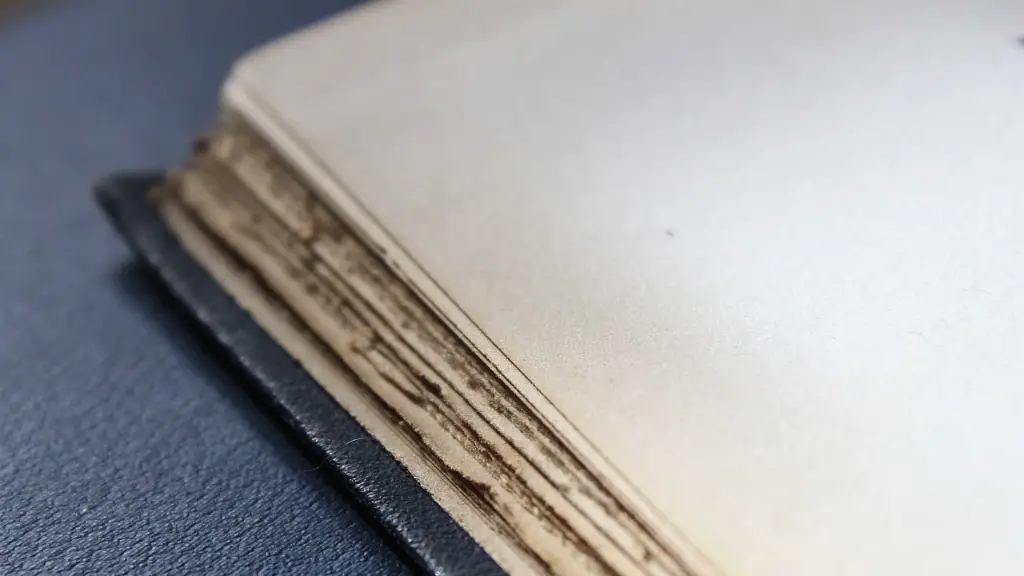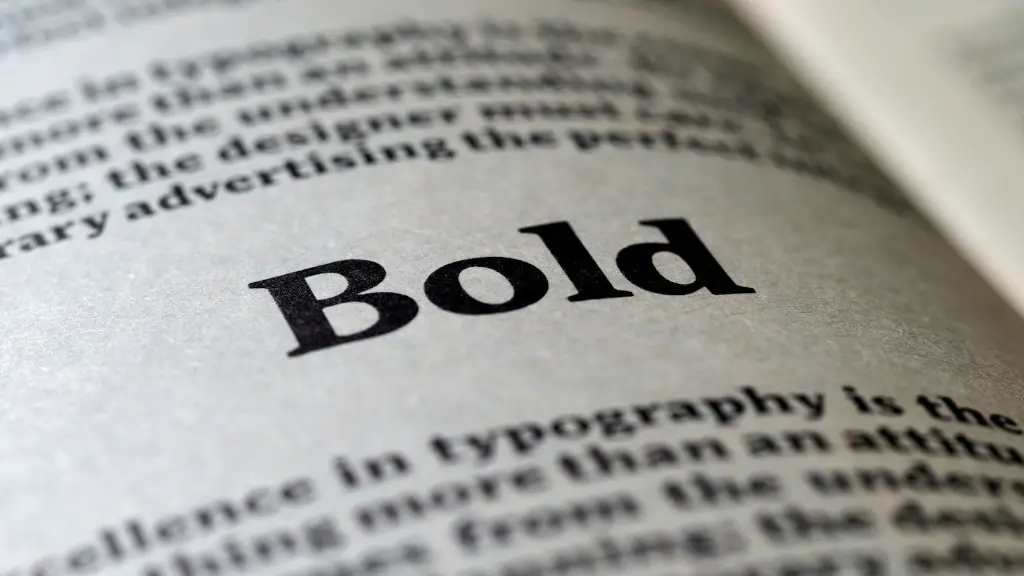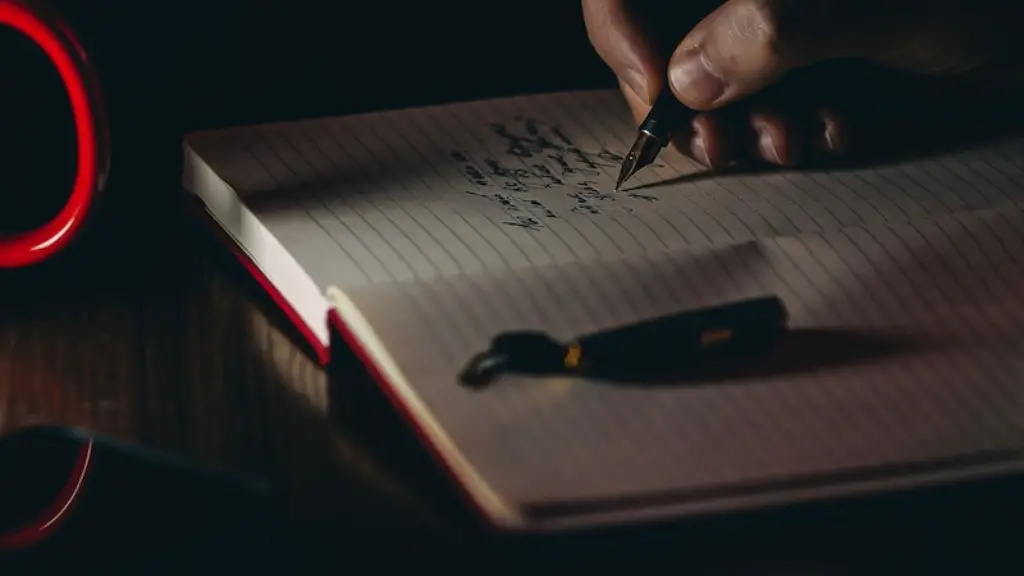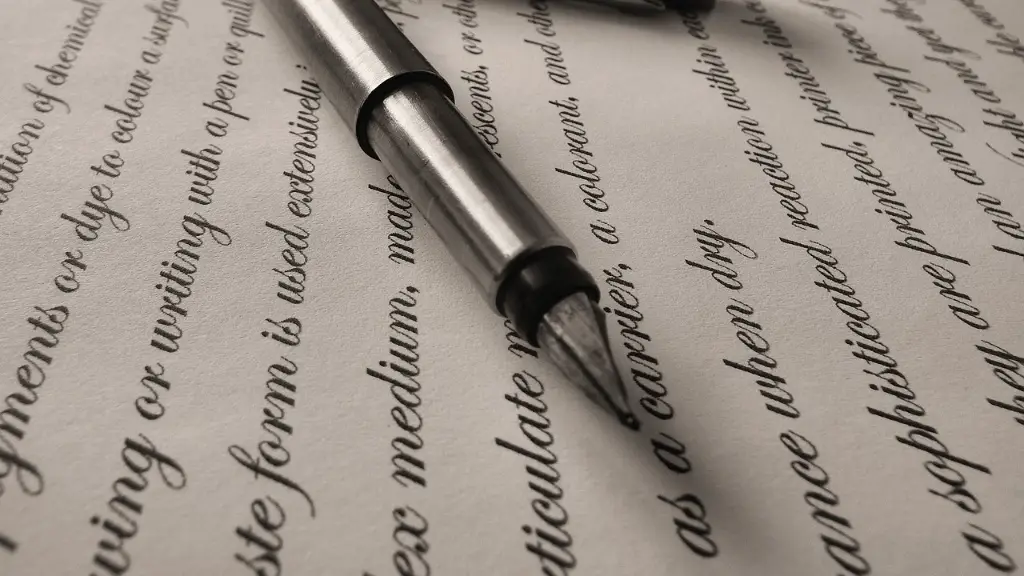If you’re reviewing a piece of literary work like a poem, it’s important to understand the basics of its structure. Knowing the form that it takes and the elements of poetry which are used, will help you to appreciate the poem more deeply. Elements of poetry like rhythm, imagery, sound, tone and language all play a role in conveying emotion and meaning.
Rhythm is a very important element of poetry. It serves two primary purposes: to give the poem direction and to create a sense of flow for the reader. Rhythm describes the pattern of stressed and unstressed syllables in a single line of poetry, and can be used to emphasize the range of emotions being expressed. If a poem has a steady rhythm, it often gives the reader a sense of calming stability. Whereas a poem with a fluctuating rhythm can take the reader on a more adventurous journey.
Imagery is another significant element of poetry as it provides a way to bring ideas to life. Imagery is the use of sensory words to describe a setting, an object, or a person. It can be used to create a vivid scene for the reader. By using images – both concrete and abstract – an author is able to add an extra layer of meaning to their poem.
Sound and tone are also essential elements of poetry. Authors use sound devices like alliteration, assonance and consonance to draw attention to particular words or phrases. They are also able to manipulate the tone of their poem by using language that is eerie or uplifting. The tone of the poem is what ultimately decides how the reader feels while they’re reading it.
Finally, language is one of the most important elements of poetry. An author is able to create a mood through the use of language and is able to convey a certain idea by their choice of words. Whilst there are many traditional poems which use a specific type of language, there are also contemporary poetic styles which embrace a more modern vernacular.
Metaphors & Similes
One of the best ways for an author to draw a comparison between two things is through the use of metaphors and similes. These devices allow readers to gain a deeper understanding of what the poem is trying to say. A metaphor is a comparison between two seemingly unrelated things, whereas a simile is a comparison between two things using the words “like” or “as.” Whilst both are extremely effective at conveying meaning, metaphors often create a more vivid and lasting impression on the reader.
Examples of metaphors and similes in poetry can be found everywhere. William Wordsworth’s “Daffodils” uses an extended metaphor to compare happiness to a field of daffodils. In “The Raven,” Edgar Allan Poe compares grief to a dead bird. Both poets use these devices to create powerful images that help to make their poems more meaningful.
Metaphors and similes are extremely powerful. Not only do they provide the reader with a better understanding of the poem, but they also add an emotional resonance to the words. When reading a poem, it’s important to look out for these literary devices as they could provide a valuable insight into the author’s intentions.
Rhymes & Repetition
Rhymes and repetition are two tools that authors often use to create a sense of flow and to keep the reader’s attention. Rhymes are words that have similar sounds and repetition is when a phrase or line is repeated multiple times.
Rhymes are a great way to draw the reader into a poem as they help to create a rhythm. This rhythm can be used to emphasize certain words and phrases and to help the reader to remember them. Repetition also helps to draw attention to an idea or phrase by making it stand out from the rest of the poem. It can help an author to add emphasis to an idea or to create a sense of intimacy between the reader and the poem.
Although rhyme is typically associated with traditional poetry forms like sonnets, it is also used in contemporary poetry. Repetition also has a place in contemporary and traditional poetry – it’s just less obvious. It can be found in the phrases used by the poet as well as in the structure of the poem.
Rhymes and repetition can be used in combination to create a powerful effect. By choosing the right words and repeating them strategically, the poet can create an emotional connection between the reader and their poem.
Visuals & Emotions
Visuals and emotions are not necessarily elements that an author can control, as they come from the reader, but they are integral to understanding a poem.
When a reader reads a poem, they form a mental image of what they are reading. This mental image can evoke certain emotions in the reader and can help them to connect with the poem on a deeper level. These emotions may be feelings of joy, sorrow, nostalgia, or even anger.
In addition to visuals and emotions, the reader also forms an opinion of the poem. This opinion helps them to better appreciate the content, while also allowing them to form their own interpretations. By understanding the context, the reader can make an informed judgement about the poem and can better appreciate its nuances.
Visuals and emotions are essential elements of poetry. By understanding how the reader interprets a poem, an author can better appreciate the impact of their work.
Grammar & Syntax
Formal English grammar is usually considered to be separate from poetry, but that doesn’t mean that it can’t be used in a poetic way. In fact, grammar and syntax are two of the most important elements of poetry.
Grammar governs how words and phrases are used, and syntax governs how those words and phrases are arranged to form sentences. The correct use of grammar can help an author achieve their desired effect, while the use of syntactic devices can add depth and complexity to the poem.
For instance, an author could use an inversion of a sentence – which is when the normal order of a sentence is changed – to create a feeling of surprise or tension. Alternatively, they may choose to use passive voice to convey a sense of distance.
Grammar and syntax are essential elements of poetry. By understanding the power of language and manipulating it in certain ways, the author is able to create a unique poem which resonates with the reader.
Symbolism & Allusions
Symbolism and allusions are devices which can transform a poem from a mundane piece of literature into a truly captivating one. Symbols are objects that stand for something else, whereas allusions are references to something else.
By using symbols in a poem, the author can convey a message without ever having to directly state it. For instance, in William Blake’s “The Tyger” the tiger is a symbol of fear and dread. In this poem, the tiger is not only used to describe a literal animal, but also to symbolize something much deeper.
Allusions can also be used to add depth and complexity to a poem. They can be used to evoke ideas and images that the reader may already be familiar with. For example, in William Shakespeare’s “Sonnet 116,” the phrase “love is not love” is an allusion to an Ancient Greek philosopher’s phrase “love is not love which alters when it alteration finds.”
Symbols and allusions can help to make a poem more emotionally powerful. By using these devices, an author can explore ideas in a way that would otherwise be impossible.
Conclusion
The elements of poetry – such as rhythm, imagery, sound, tone, and language – are all essential components of a poem. They are powerful tools for the author to explore ideas, evoke emotions, and add meaning to their work. Metaphors and similes can be used to draw comparisons between two unrelated things, whilst rhymes and repetition can be used to help create a rhythm and to keep the reader’s attention. Visuals and emotions are not necessarily elements that the author can control, but they are essential to understanding a poem. Grammar and syntax are also essential elements as they govern how words and phrases are used and arranged. Finally, symbols and allusions can be used to add depth and complexity to a poem.
By understanding the elements of poetry, it’s easier to appreciate the poem in its entirety. Once the elements have been recognized, the reader can begin to explore the nuances of the poem and can better understand the author’s intentions.
